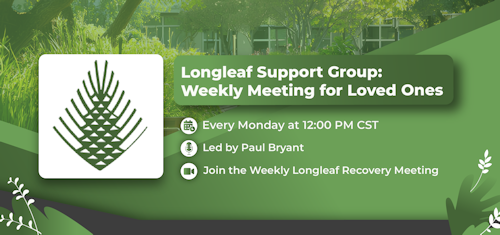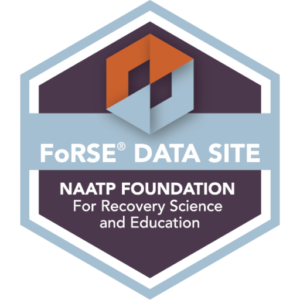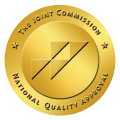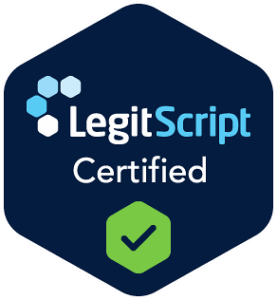Substance abuse prevention plays a vital role in helping individuals and communities make healthier choices. At Longleaf Recovery & Wellness, we believe education is the foundation of effective prevention. That’s why we’ve created this comprehensive guide to National Substance Abuse Prevention Month, an annual observance dedicated to raising awareness about substance misuse and connecting people with resources that can help.
Each October, communities across the country come together to focus on prevention strategies, share resources, and support those affected by substance use disorders. Whether you’re a parent, educator, healthcare professional, or community member, understanding the purpose and activities of this month can help you make a positive difference.
What Is National Substance Abuse Prevention Month
National Substance Abuse Prevention Month takes place every October. It’s a time set aside to highlight the importance of preventing substance misuse before it begins. The month brings together individuals, families, schools, and communities to raise awareness about substance use and promote healthy choices.
This observance was first established in 2011 through a presidential proclamation. Its primary goal was to focus national attention on substance abuse prevention and educate the public about available resources. Since then, it has grown into a nationwide effort that includes events, educational campaigns, and community activities.
The main objectives of National Substance Abuse Prevention Month include:
- Public Education: Sharing information about the risks of substance misuse and the benefits of prevention
- Resource Sharing: Connecting communities with tools and programs that support prevention efforts
- Stigma Reduction: Encouraging open conversations about addiction and mental health
- Community Engagement: Bringing people together to address substance use issues at the local level
According to the Substance Abuse and Mental Health Services Administration (SAMHSA), approximately 46.3 million people aged 12 or older had a substance use disorder in 2022. This highlights why prevention efforts remain so important in our communities.
Why October Matters for Drug Awareness
October was chosen for National Substance Abuse Prevention Month for several strategic reasons. First, it aligns with the beginning of the school year when students, families, and educators are focused on learning and establishing healthy routines. This timing allows schools to incorporate prevention messages into their curriculum early in the academic year.
The month also includes Red Ribbon Week (October 23-31), one of the oldest and largest drug prevention campaigns in the country. This week-long observance honors the memory of DEA Agent Enrique Camarena and promotes drug-free living through school and community activities.
In many states, including Alabama, substance use continues to affect thousands of families. Recent data from the Alabama Department of Public Health, as seen in Alabama opioid epidemic & addiction statistics, shows that drug overdose deaths increased by 15% between 2020 and 2022, with opioids involved in the majority of these deaths.
Awareness months like this one work because they:
- Focus attention: They concentrate public and media attention on a specific issue
- Coordinate messaging: They allow organizations to amplify each other’s efforts
- Motivate action: They encourage individuals and communities to take concrete steps
By dedicating an entire month to prevention, we create more opportunities for education, outreach, and community building around this important issue.
How National Prevention Month Began
National Substance Abuse Prevention Month was established by presidential proclamation in October 2011. The proclamation recognized that prevention is one of the most effective ways to reduce the toll of substance use and addiction in our communities.
Before 2011, similar observances existed under different names, such as National Drug Abuse Prevention Month. Over time, the focus expanded to include all forms of substance use prevention, not just illegal drugs. This shift reflected a growing understanding that alcohol, prescription medications, and other substances also present significant risks.
The Office of National Drug Control Policy has stated: “Prevention is the most effective tool we have to reduce the toll of substance use and addiction in our communities.” This perspective represents a significant shift in how we approach substance use disorders.
Historically, prevention approaches often relied on punitive measures or scare tactics. Today’s evidence-based prevention strategies focus more on education, early intervention, and building protective factors in communities. This evolution reflects our growing understanding of addiction as a complex health issue rather than simply a matter of personal choice.
Key Types of Substance Use Prevention Strategies
Prevention in the context of substance use disorders refers to actions that help stop substance misuse before it begins, identify early signs of risk, and support those in recovery to prevent relapse. These efforts can be organized into three main categories:
aims to prevent substance use before it starts. These programs typically target the general public, especially youth, with education about the risks of substance use and the benefits of healthy choices. School-based programs like “Life Skills Training” and community campaigns are common examples. According to the National Institute on Drug Abuse, comprehensive primary prevention programs can reduce youth substance use by up to 30%.
focuses on early identification and intervention for individuals showing early signs of substance use or those at higher risk. This might include people with a family history of addiction or those experiencing significant life stressors. Screening programs in healthcare settings and targeted support groups are examples of secondary prevention. Research shows these interventions can reduce the progression to substance use disorders by 20-25%.
addresses the needs of individuals already experiencing substance use issues. The goal is to reduce harm, prevent relapse, and support recovery. This includes treatment programs, recovery support services, and harm reduction strategies like needle exchange programs. Studies indicate that comprehensive recovery support increases long-term sobriety rates by 50% or more.
These prevention approaches work best when they’re part of a comprehensive strategy that addresses individual, family, and community factors.
How to Get Involved in Prevention Month
There are many ways to participate in National Substance Abuse Prevention Month, regardless of your role in the community. Here are some effective approaches:
Local events bring people together to learn about substance use prevention and available resources. These might include:
- Awareness walks or runs
- Educational forums with expert speakers
- Health fairs with prevention information
- Candlelight vigils honoring those affected by addiction
If you’re planning a community event, consider partnering with local organizations like health departments, schools, or treatment centers in Alabama. Promote your event through social media, local news outlets, and community calendars. Providing educational materials helps attendees learn more about prevention and available resources.
In Alabama, you can find local events through community coalitions, health departments, or treatment centers like Longleaf Recovery & Wellness, which often supports community initiatives through speakers, resources, and event sponsorship.
Schools play a crucial role in substance use prevention. Educational approaches might include:
- Integrating prevention curriculum into health and science classes
- Encouraging youth-led activities like poster contests or peer education
- Hosting assemblies with guest speakers who can share personal experiences
- Training teachers and staff to recognize warning signs of substance use
Resources for educators include SAMHSA’s “Talk. They Hear You.” campaign, which provides materials to help adults have conversations with young people about alcohol and other drugs.
Workplaces can support prevention through:
- Employee education programs on substance use and mental health
- Wellness activities like stress management workshops
- Clear policies on substance use and access to Employee Assistance Programs (EAPs)
- Leadership training on recognizing and addressing substance use concerns
The National Safety Council offers resources to help employers develop effective workplace prevention programs.
Youth Substance Use Prevention Tips
Youth-focused prevention is especially important since early substance use increases the risk of developing addiction later in life. According to the National Institute on Drug Abuse, nearly 10% of U.S. teens reported using illicit substances in the past year.
Starting conversations about drugs and alcohol early helps establish open communication. These talks can begin in elementary school using age-appropriate language and examples. Some helpful conversation starters include:
- “What have you heard about drugs or alcohol from your friends?”
- “How would you respond if someone offered you something you didn’t want to try?”
- “What questions do you have about why some substances are harmful?”
Effective conversations involve listening without judgment, providing factual information, and encouraging questions. It’s important to avoid scare tactics or dismissing concerns, as these approaches can reduce trust and communication.
Young people are more likely to avoid substance use when they have positive role models who demonstrate healthy behaviors. This includes:
- Family members who model responsible choices
- Teachers, coaches, and mentors who provide guidance and support
- Community leaders who promote healthy activities and environments
Mentorship programs and extracurricular activities provide opportunities for young people to connect with positive influences outside the home.
Offering activities that build skills and confidence helps address risk factors like boredom, peer pressure, and low self-esteem. These might include:
- Sports and physical activities
- Arts and creative expression
- Volunteering and community service
- Academic clubs and interest groups
These activities provide healthy ways for young people to have fun, manage stress, and build connections with peers and adults who support healthy choices.
Where to Find Treatment and Recovery Resources
While prevention is essential, treatment and recovery resources are equally important for those already experiencing substance use issues. A range of options exists to support individuals at different stages:
- Crisis Hotlines provide immediate support for people in distress: * SAMHSA National Helpline (1-800-662-HELP): Offers free, confidential support 24/7 * National Suicide & Crisis Lifeline (988): Provides crisis support via call or text
- Assessment Tools help identify potential substance use concerns: * SAMHSA’s online screening tools * Assessments through local health departments or healthcare providers
- Treatment Locators help find appropriate care options: * SAMHSA Treatment Locator (findtreatment.gov) * NIDA’s Find Treatment tool
- Support Groups offer peer connection and encouragement: * Alcoholics Anonymous (AA) * Narcotics Anonymous (NA) * SMART Recovery * Al-Anon (for families and friends)
In Alabama, the Alabama Department of Mental Health provides information on prevention, treatment, and recovery programs across the state. Local community mental health centers also offer services in many areas, including drug rehab centers in Alabama.
Finding the right level of care depends on several factors, including the person’s substance use history, mental health needs, and available support. Treatment might include detoxification, inpatient or outpatient therapy, medication-assisted treatment, or recovery support services.
Frequently Asked Questions about Substance Use Awareness Month
National Substance Abuse Prevention Month is observed annually in October, providing a dedicated time for communities to focus on prevention strategies and raise awareness about substance misuse.
Red Ribbon Week (October 23-31) is a key campaign during National Substance Abuse Prevention Month promotes drug-free living through school and community activities.
Families can support substance abuse awareness by having open, age-appropriate conversations about drugs and alcohol, modeling healthy coping mechanisms, and creating strong family bonds that serve as protective factors against substance use.
Alabama offers numerous substance abuse prevention resources including state-funded programs, community coalitions, school-based initiatives, and treatment centers like Longleaf Recovery & Wellness that provide comprehensive care and prevention education.
Take the Next Step for Lasting Wellness
At Longleaf Recovery & Wellness, we understand that prevention and treatment are both essential parts of addressing substance use in our communities. Our evidence-based approach includes medical detox, therapy, family support, and aftercare planning designed to meet each person’s unique needs.
Recovery is a journey that looks different for everyone. Some may benefit from intensive treatment, while others may need ongoing support to maintain their progress. Whatever your situation, know that help is available and recovery is possible.
If you or someone you care about is struggling with substance use, reaching out for information is a positive first step. Our team is here to answer questions and provide guidance about available options. Contact Longleaf Recovery & Wellness today to learn more about our programs.
- Substance Abuse and Mental Health Services Administration. (2023). Key Substance Use and Mental Health Indicators in the United States: Results from the 2022 National Survey on Drug Use and Health. https://www.samhsa.gov/data/release/2022-national-survey-drug-use-and-health-nsduh-releases
- National Institute on Drug Abuse. (2023). Monitoring the Future 2023 Survey Results. https://nida.nih.gov/research-topics/trends-statistics/infographics/monitoring-the-future-2023-survey-results
- Centers for Disease Control and Prevention. (2022). Preventing Substance Use Disorders. https://www.cdc.gov/opioids/prevention/index.html
- Alabama Department of Public Health. (2023). Opioid and Substance Use Dashboard. https://www.alabamapublichealth.gov/opioid/dashboard.html
- Substance Abuse and Mental Health Services Administration. (2023). National Substance Abuse Prevention Month. https://www.samhsa.gov/prevention-week/about

